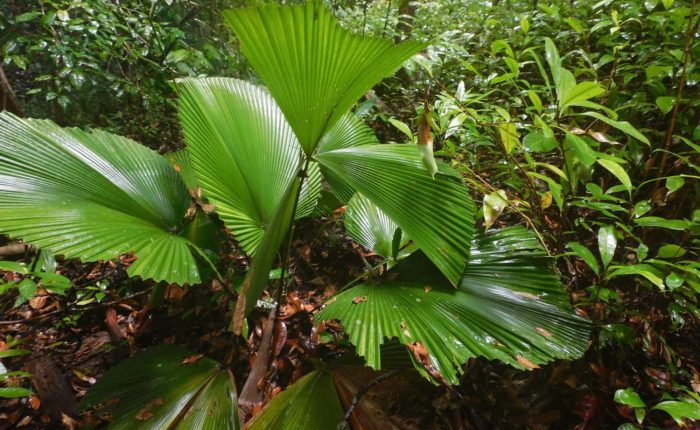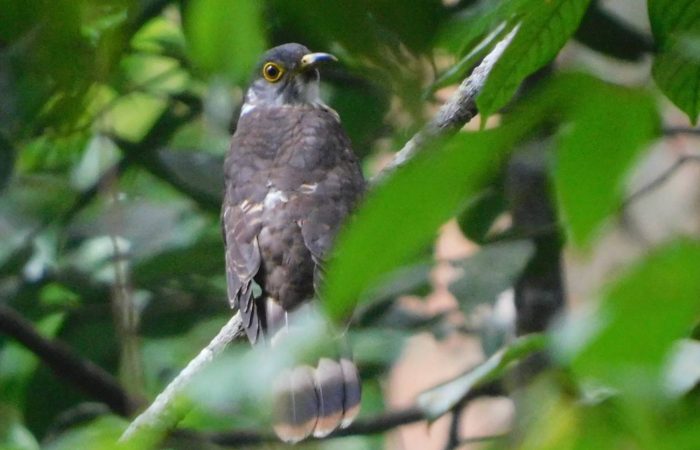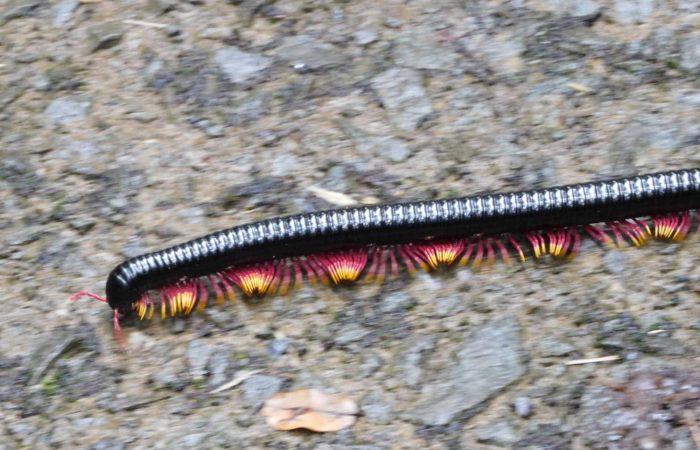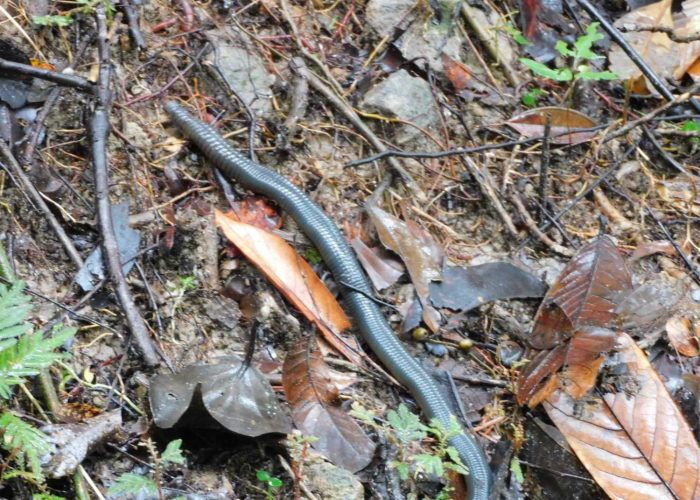This March I had a mini-break in Borneo. It wasn’t intentional. My original plan was for a three week visit, but given current world events, I don’t think I need expand any further.
Although I was only in Sarawak for three days, I did manage to spend two of them at Kubah National Park near Kuching.
The lush and diverse forest here is a dipterocarp forest, named for the plant family (Dipterocarpaceae) to which most of the largest trees here belong. As the name suggests, the fruits of these trees have seeds with two wings (di = two; ptero = wing; carp = seed).
Palms are also a speciality of the forests of Kubah National Park, with around 100 species recorded. I saw a diversity of palms on my first day walking on the trails, including Licuala orbicularis, which is endemic to Borneo.

On my second day in the National Park I woke early to start a trek to the top, following the summit trail leading to Kubah’s highest peak Gunung Serapi. It was a beautiful morning as I set off and I soon had a great encounter with three Malaysian Hawk Cuckoos that were being very vocal along the forest edge.
Although it was steep in places, the paved track did make for a reasonably straightforward trek and as I continued up towards the summit, various creatures crossed my path. In addition to the spectacular butterflies gliding through the forest, one of the most colourful creatures making its way across the track was a giant millipede Trigoniulus sp.


The weather then turned and gave me a reminder of just why rainforests have their name! This appeared to affect the blind snakes Typhlopidae sp. activity, as two passed in front of me, just a few minutes apart from each other. From a distance these snakes could be mistaken for big earthworms, but they move in a serpentine-manner and closer examination reveals them to be covered in scales rather than the segments characteristic of true earthworms.

The rain was torrential, so I decided to make use of one of the rain shelters conveniently situated along the track. It was nice to get a break from the rain as it bounced off the track and flowed like a river down the slope. I then caught a glimpse of something moving above me. Perhaps it was a spider? But, when I looked closer, it was clearly something else… a giant centipede Scolopendra sp. was swiftly moving along each of the beams, apparently searching for any other creatures before it tucked away and moved into stillness. I however decided to get on my way, with the words of a university lecturer many years ago describing the excruciating pain that they can cause when they bite you ringing in my ears. An impressive beast nonetheless.
I really enjoyed my Borneo in brief experience and hope to return for longer in the future to uncover more of the wonderful wildlife that can be found there.

